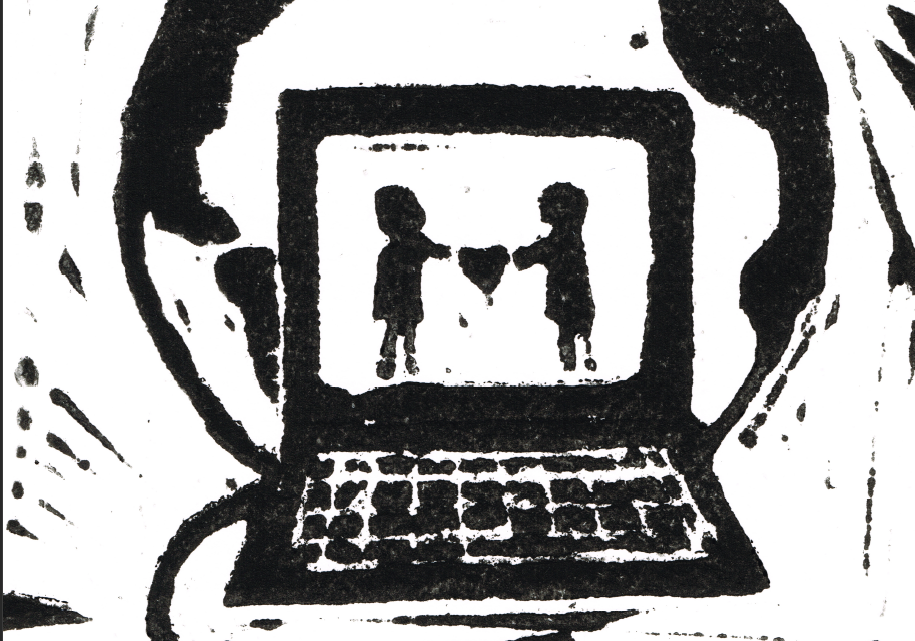Why do platforms die? The reasoning behind perishing platforms
Written by Helge Moes
Illustration by Merel Hamminga
Before Instagram, Snapchat and TikTok came to life, there were popular media such as Google+, Friendster, Musical.ly, Myspace, Vine, and Hyves. These are just some of the social media platforms you may have used or heard of. I fondly remember going on Vine to watch the new meme-related short videos of around 10 seconds or scrolling through the Hyves-pages of my friends during high school. The platforms were part of a technological development in social media and were important communication devices over a decade ago. They allowed individuals to construct a public profile within a system and provide a list of other users with whom they shared a connection (Boyd & Ellison, 2007). Nevertheless, these platforms are deep in the past, since they have been regarded as ‘dead platforms’ (McCammon et al., 2022).
You may ask yourself: how can something inanimate such as a social media platform be considered ‘dead’ in the first place? In this case, ‘dead’ is considered to hold no social activity, which leads to a desolate platform and nostalgic memories of the users who used these digital environments (Quintana, 2018). However, what is deemed a ‘dead platform’ is negotiated by social actors in technological cultures (Corry, 2022). Consequently, a platform that has their servers shut down is considered a dead platform.
New platforms have emerged and took the place of social hubs for these media. Content creators and other users shifted their objective to develop their social media careers to different platforms. What remains are only desolate platforms and nostalgic memories from the users. So, what is the reason for these platforms to defunct and does this indicate a shift in platformization?
To some degree, academia sheds light on this subject. I dove behind my computer and surfed the World Wide Web to investigate this topic and to find a trace of some of these platforms. My article gives a brief history on previous social media platforms and how they ceased to exist. More specifically, I focus on Friendster, Myspace, and Vine. In addition, I shall bring up what we can expect to happen to social media platforms we are fond of nowadays.
Friendster
One of the earliest platforms that I came across was Friendster. Essentially, it created the social networking sector and was renowned in the United States in 2002. Moreover, the platform was considered the largest social network in Asia in 2008 (Liu, 2008). The platforms’ service was to enable users to contact other members and share online content. It was used for dating and discovering new events and is deemed one of the original social networks (Corry, 2022). Similar to Facebook, which emerged after it, Friendster encouraged their users to use their real names and images for their profiles and send images, messages and posts to others.
Over time the shortcomings of the platform became more apparent: performance issues of networking, emerging competition of other platforms, such as Myspace and Facebook, and extensive content moderation (Corry, 2022). As stated by a former employee: “Servers would just fall over because too many people were trying to upload pictures, and the system couldn’t handle it” (Corry, 2022, p. 38). From a user perspective, the platform had a slow loading time and did not catch up to the technical innovations other platforms were incorporating (Corry, 2022).
Eventually, Friendster was sold to Malaysian payments company Money Online (MOL) in 2011. They had the intention to change the platform into a gaming site. Nevertheless, Friendster was overtaken by Myspace and Facebook as the main social network platforms and was shut down in 2018 (Corry, 2022). This was due to different managerial and technical issues the company was experiencing, which led to its loss of a network effect and to an extent its potential to grow. The tale of Friendster portrays that the platform became too successful for its own good. It could not keep up with the overwhelming demand of social networking by the users. A former employee of Friendster stated: “For them, Friendster died the moment they realised that its technical problems were too great to overcome” (Corry, 2022, p. 37).
However, Friendster points out how death discourses are beneficial in technological cultures, since employees learn from these failures and implement the experience in order to develop new platforms (Corry, 2022). For instance, Friendster paved the way for other sites, such as: LinkedIn, Myspace and Facebook by developing features that enable the user to connect and share content online. “As this account shows, death discourse is productive not only when mobilised by industries—through Web 2.0 or the “Move Fast, Break Things” ethos—but when adopted, mobilised and negotiated by individuals. In this sense, Friendster’s story continues to be relevant, reactivated, and productive long after these actors have understood it to be dead.” (Corry, 2022, p. 44). Now, let us look at another case of a platform that inevitably met its end.
Myspace
Myspace was launched in 2003, around the similar time as Friendster (Boyd & Ellison, 2007, p. 216). It welcomed the stray Friendster users and gave them a new digital environment for them to practice their social networking. Additionally, it was apparent that the end of Friendster ignited the golden age for Myspace. The platform had the highest number of monthly users of any platform with 70 millions in 2007 (Arunrangsiwed, 2013). While Friendster attracted mainly users in the United States, Myspace reached out and gained attention worldwide.
Although Myspace had many similarities to Friendster, since it was created to compete with Friendster (Boyd & Ellison, 2007), it kept on redesigning the platform in order to stay relevant for its users. This led to different versions of profile layouts: 1.0, 2.0 and 3.0 (Arunrangsiwed, 2013). One of the features allowed users to choose if a profile was publicly displayed or for friends only, unlike Facebook. The platform differentiated itself by granting the user a plethora of means to personalize their page. It enabled users to add HTML into the frames that formed their profiles with layouts and backgrounds (Boyd & Ellison, 2007). Unfortunately, not all designs seemed to be favourable for the users.
Eventually, Myspace was sold to News Corporation for $580 million in 2005 (Boyd & Ellison, 2007, p. 217). The company attempted to change the social medium into a music platform, where artists would upload their songs. In the beginning, this alteration seemed to be a success, since the platform accumulated 53 million songs by 14.2 million artists in 2014 (Francisco, 2014). This success would lead to the transformation of Myspace from a social media platform to a music platform. As stated by Arunrangsiwed (2013): “Myspace does not call the contacts as friend anymore, after it travelled from ‘A Place for Friends’ to ‘A Place for Music’” (p. 6).
Myspace incorporated features of other platforms. For instance, the emergence of YouTube (2005) allowed for users to embed videos in their profiles. However, Myspace recognised the competition of YouTube and thus, they decided to ban this feature (Tue, 2006). This led to a huge loss of support form the Myspace users, which has played a role in the demise of Myspace as a social media platform. In 2019, it was revealed that Myspace had accidentally lost all of their content until 2015 (Brodkin, 2019). A server migration took place with no backup, resulting in over 12 years of content to be dissolved into thin air. Nevertheless, Myspace is still active as a music platform and the server is still online.
While Myspace is still accessible for the public, the following platform is not.
Vine
Vine was launched in 2013 by Twitter (Newton, 2016) and was a well-known video app where users were creating six-second videos. The platform can be compared to the current medium TikTok, which also incorporates looped video sharing. Moreover, the interface of Vine was similar to Twitter, but rather than displaying texts, it showed videos. The platform enabled users to create content, follow friends and creators, and browse through other trending videos on their ‘Explore’ page or the ‘Activity’ page that notified the user if there were relevant events that corresponded to the profile (Zhang et al., 2014). In contrast to the other platforms mentioned in this article, Vine exclusively focused on mobile users. Vine generated 40 million users since its launch (Zhang et al., 2014). However, while it was experiencing astronomical success and creative input, it was short-lived.
On October 27th 2016, Twitter announced that Vine will be shut down (Vine, 2016). There were multiple issues that led to this abrupt end. In the following years after the launch, Twitter laid off the founders and multiple substitute managers, or they left at their own will, which resulted in no clear direction of the platform. Consequently, the app failed due to the technological innovations that their competitors were implementing, while Vine was experiencing a management fiasco. This resulted in a ‘creative-wash’, where the content creators left the platform in order to pursue their careers on a different platform.
Twitter was not able to sustain the application, since it was focused on their own core business. Applications, such as Snapchat and Instagram, allowed users to broadcast ten-second video clips and kept on reinventing the short-video genre. Twitter was contemplating whether to absorb the Vine app within their own platform (Newton, 2016). However, this was only evidence for the Vine employees that Twitter did not regard Vine as a standalone platform.
Vine was significantly different from other traditional video sharing media. Consequently, it can be considered a blessing and a curse. While the six-second video clip sharing can be deemed unique, it had shortcomings. Since 2019, Vine has become a repository where content can only be located by using a URL of a specific Vine account or tweet (Vine FAQs, 2022). Vine has still archived the public profiles, but the ability to log in has been disabled. This goes to show that “Companies regularly fail and disappear – increasingly taking with them troves of customer-user data that receive only limited protection and attention under existing law” (Öhman & Aggarwal, 2020, p. 14).
Social media platforms and what to expect
After reading multiple articles on ‘dead platforms,’ I have come across many reasons for these platforms to defunct, whether it is through managerial issues, their own success, failing to grab the attention of their users and not living up to the technological advancements. Consequently, platformization is not a uniform process, since platforms constantly copy features of others and adapt to current technological innovations. In addition, platformization can be seen as the natural order of which platform is considered relevant for use in a certain time period.
I have come to the conclusion that the term ‘dead platforms’ should be avoided. The term ‘dead’ is limited to a fundamental end of a platform, it does not entail the complex social and technical relations that continue to exist. For instance, Vine is an archive of millions of accounts. Therefore, the awkward videos of you in high school can be traced back if necessary. This implies that there is life after death. In the introduction of this article, I stated that the death of a platform is defined by its termination of the server. Yet, I have realised that these platforms show how death can create novel platforms to emerge and grant new insights on how social media platforms function and what can be considered defunct.
In this case, ‘dead’ is considered to hold no social activity on the platform, which leads to a desolate platform and nostalgic memories of the users who used these platforms. However, what is believed to be a ‘dead platform’, I would rather refer to as an ‘original’ or ‘authentic’ platform—since these social media platforms paved the way for social networking and are incorporated in the platform we currently use. As stated by Vallas & Schor (2020): “Platforms are seen as entrepreneurial incubators, digital cages, accelerants of precarity, and chameleons adapting to their environments” (p. 273). That means, as Joseph Schumpeter—an Austrian economist—stated, that creative destruction is necessary for continual innovation (Warner, 2013). Novel techniques can only emerge when the old are abolished.
Although, this is rather a brief history of several social media platforms that were forgotten. They played an integral role for the development of the digital social landscape we currently use. For instance, Facebook has been regarded as a well established platform, but emerging platforms such as TikTok forces them to chase its own business model (Newport, 2022). I am curious what will happen to current platforms that we are using and if they drastically change our perception of media. Based on these stories, one thing is certain: social media platformization is a thriving and developing industry that will capture our attention for the years to come. The end of a platform is not a mere loss, but a liberation of the Internet to creatively innovate itself.
Bibliography
Arunrangsiwed, P. (2013). 2013 The Study of Users’ Conflict and Issues in the History of Social Networking Site Myspace.
Boyd, D. M., & Ellison, N. B. (2007). Social Network Sites: Definition, History, and Scholarship. Journal of Computer-Mediated Communication, 13(1), 210–230. https://doi.org/10.1111/j.1083-6101.2007.00393.x
Brodkin, J. (2019, March 18). Myspace apparently lost 12 years’ worth of music, and almost no one noticed. Ars Technica. https://arstechnica.com/information-technology/2019/03/myspace-apparently-lost-12-years-worth-of-music-and-almost-no-one-noticed/
Corry, F. (2022). Why does a platform die? Diagnosing platform death at Friendster’s end. Internet Histories, 6(1–2), 31–47. https://doi.org/10.1080/24701475.2021.1985360
Francisco, S. N. in S. (2014). Myspace: Where are you going? We still have all your HUMILIATING PICS. Retrieved November 13, 2022, from https://www.theregister.com/2014/06/02/myspace_we_still_have_all_your_humiliating_photos_so_hows_about_reconnecting/
Hendelmann, V. (2021, July 7). What Happened To Myspace? And Why Did It Fail? https://productmint.com/what-happened-to-myspace/
Liu, L. W. (2008, January 29). Breaking News, Analysis, Politics, Blogs, News Photos, Video, Tech Reviews. Time. http://content.time.com/time/business/article/0,8599,1707760,00.html
McCammon, M., Virgilio, D., Ogden, C., Ackermann, K., Zuckerman, E., Gehl, R., Akhtar, S., Al-Azri, S., Steele, C. K., Hamilton, A. M., Ben-David, A., Wasserman, S., Namusoga-Kaale, S., & Rankin, J. L. (2022). Dead-and-dying platforms: A roundtable. Internet Histories, 6(1–2), 14–30. https://doi.org/10.1080/24701475.2022.2071396
Newport, C. (2022, July 28). TikTok and the Fall of the Social-Media Giants. The New Yorker. https://www.newyorker.com/culture/cultural-comment/tiktok-and-the-fall-of-the-social-media-giants
Newton, C. (2016, October 28). Why Vine died. The Verge. https://www.theverge.com/2016/10/28/13456208/why-vine-died-twitter-shutdown
Öhman, C., & Aggarwal, N. (2020). What if Facebook goes down? Ethical and legal considerations for the demise of big tech. Internet Policy Review, 9(3). https://doi.org/10.14763/2020.3.1488
Quintana, R. (2018, October 18). The Life and Death of Platforms and Tools. Social Magnets. https://www.socialmagnets.net/the-life-and-death-of-platforms-and-tools/
Tue, J. 10th 2006 07:35am-C. L. (2006, January 10). So That’s Why MySpace Blocked YouTube. Techdirt. https://www.techdirt.com/2006/01/10/so-thats-why-myspace-blocked-youtube/
Vallas, S., & Schor, J. (2020). What Do Platforms Do? Understanding the Gig Economy. Annual Review of Sociology, 46. https://doi.org/10.1146/annurev-soc-121919-054857
Vine. (2016, November 3). Important News about Vine. Medium. https://medium.com/@vine/important-news-about-vine-909c5f4ae7a7
Vine FAQs. 2022. Retrieved November 13, 2022, from https://help.twitter.com/en/using-twitter/vine-faqs
Warner, J. (2013). Capitalism, Socialism and Democracy. By Joseph A. Schumpeter. The European Legacy, 18(2), 262–263. https://doi.org/10.1080/10848770.2012.755671
Zhang, L., Feng Wang, Jiangchuan Liu. 2014. Understand Instant Video Clip Sharing on Mobile Platforms | Proceedings of Network and Operating System Support on Digital Audio and Video Workshop. . Retrieved November 13, 2022, from https://dl.acm.org/doi/abs/10.1145/2597176.2578278?casa_token=cYLXP1gcMjAAAAAA:y141eS4HCj5oGevqG1T9ZbdaVxCNgxS8g6IjBSWFqINjpFTNCMJzUe51J5F38ZWHkdzVcsb2LnaLig

Helge Moes (1996) is studying the Research Masters in Communication Science at the University of Amsterdam. Previously, he was an undergraduate Media & Information student and Erasmus exchange student at the School of European Languages Culture and Society at University College London. He wrote his thesis on building virtual communities on social media through the use of affordances during his traineeship as a Digital Transformation Trainee at the Digital Society School. Besides media, science and technology, he has broad interests in (pop) culture, philosophy, history, film, psychology and business administration. At Inter, Helge is writing editor and takes care of pieces related to the Institute of Interdisciplinary Studies.

